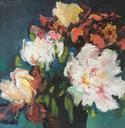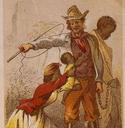John M. Gottman,
The Relationship Cure
(New York: Three Rivers Press, 2001).
Dr. John Gottman is the cofounder and codirector of the Gottman Institute (a for-profit therapist training entity), Professor Emeritus of Psychology at the University of Washington in Seattle and heads The Relationship Research Institute with his wife, Dr Julie Schwartz. He is a New York Times bestselling author and has been a guest of Good Morning America, 20/20,and The Oprah Winfrey Show. Considered a leading expert in maintaining and improving relationships and marital stability, his work and thought are in popular demand, especially on the subject of divorce.
In The Relationship Cure, one of many books in a series on improving intimate relationships, Dr Gottman suggests a practical program for enabling people in to share and respond to each other's "emotional information." The program is applicable to many forms of relationship, including spousal, paternal, and business. He suggests that the successful transaction of emotional information promotes healthy communication. Healthy communication, in turn, creates a sense of connection. When people feel connected, he says, they get along and are capable of sharing in life's joys and burdens. According to his research, the more this happens, the more satisfying relationships become, while conflict is reduced and transformed into an opportunity to stay connected and engaged. Since failure to connect, he writes, is a major cause of the culture's high divorce rate, learning to share and respond to emotional information is vital.
Dr Gottman's practical self-help program begins by defining the act of sharing emotional information as a "bid." This original concept is the fundamental unit of emotional communication. A bid, he goes on to say, can be placed through a gesture, facial expression, tone of voice, word or touch. In fact, it is impossible not to communicate in this way, he argues. "Whether you smile or maintain a blank face, look straight ahead or down at the ground, reach out and touch or hold back, you are communicating and others will attach meaning to that communication" (170). Next Dr Gottman defines the three categories into which responses to bids of communication fall. The first is a "turning-toward response," which may include full attention, eye contact, and the offering of opinions, thoughts or feelings. The second is a "turning-away response" which is failing to pay attention to another's bid by being preoccupied, ignoring completely or focusing on irrelevant aspects of the bid or offering altogether unrelated information. The third and most harmful category is the "turning-against response." This includes contemptuous, belligerent, domineering, contradictory, critical, or defensive reactions.
Building awareness of the concepts defined above is the first of five steps toward building and maintaining healthy intimate relationships. The second step in the proposed cure is discovering how the brain's emotional command system, based on physiology, affects the bidding process. The command system is defined as the nerve-based circuits that coordinate electrochemical signals in the brain. This would be responsible for pre-determining certain characteristics like a person's temperament. A series of questionnaires is offered to help identify an individual's most dominant command systems and to explain how they can contribute to emotional well-being. The third step involves using survey questions to examine emotional heritage and its impact on the ability to connect to different bidding styles. Considering behavorial patterns within families their transmission across generations would be an example of this.
The fourth step in the cure is developing emotional communication skills. This is done by studying and observing all the ways in which the body can communicate meaning, learning to pay attention to and express feelings, developing an ability to listen, and pinpointing important rituals or traditions to respect and/or recreate. In this section, examples of body language and rituals are listed as a starting point for identification.
The fifth and final step in the cure is learning to find and identify shared meaning with others. This includes learning to recognize the idealism and vision of another's position in order to find areas of common ground, or learning to recognize and respect another's vision and goals. It leads the reader easily into the concluding chapter on "applying what you've learned." This chapter offers a variety of exercises for building and strengthening emotional connections by utilizing all the information gained through working with steps 1 to 5.
While The Relationship Cure offers practical advice which is based on decades of research and clinical experience, it is difficult, at least from this book, to derive a deeper understanding from it of the nature of marriage and the person. It is clear that Dr Gotmann desires to help people recognize and respond to even the subtlest of loving and attentive gestures, with the hope of reducing the number of divorces and unhealthy relationships, but why he believes it is so important to do so remains obscure. Perhaps this is a topic discussed at greater length in another of his books. Based on the absence of a deeper vision of marriage and the person, this book may best be approached by a community of readers who are proactively trying to maintain or tune-up a marriage, and where a notion of the sanctity of marriage and dignity of the person is already presupposed. A reader who is looking for a reason to defend or fight for even the unhealthiest of relationships may find the text a bit superficial or wanting.
Suggesting itself as primarily a workbook, the text does offer simple and useful suggestions for responding to bids from the most aggressive to the most passive in nature, and helps a responder identify how he may be missing a crucial message. It is clear that the work's primary aim consists of learning to build successful relationships through nurturing intimacy. This is accomplished, albeit in a workbook fashion, through the recognition of the person as an "other" who is equipped with his own method for bidding, and learning to identify - and perhaps adjust - methods of sharing emotional information to create more successful transactions. I agree, as Gottman suggests, that this will encourage the ebb and flow of authentic communication and reduce the risk of divorce by nurturing more meaningful relationships.
Julie E. Heldt completed a Masters of Theological Studies at the Pontifical John Paul II Institute for Studies on Marriage and Family in Washington, DC. She currently lives in Houston.



